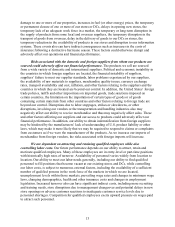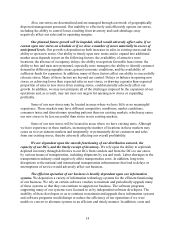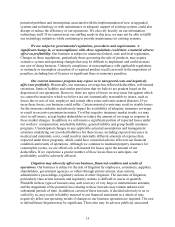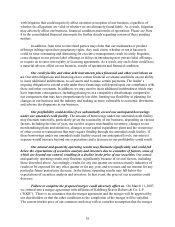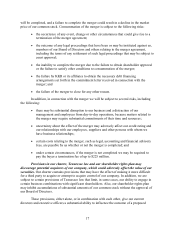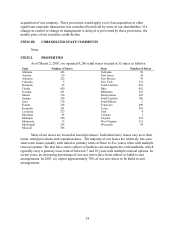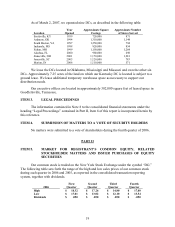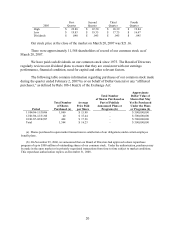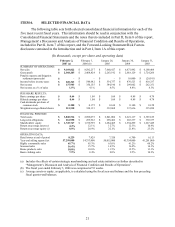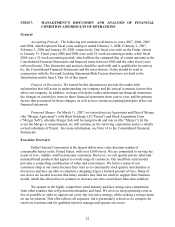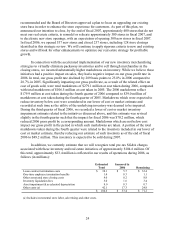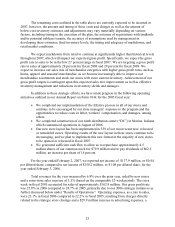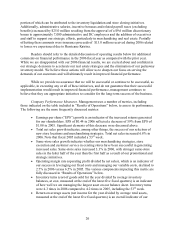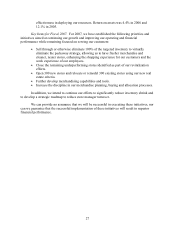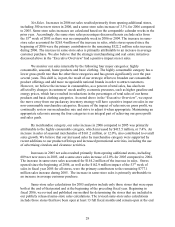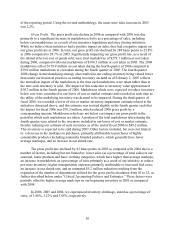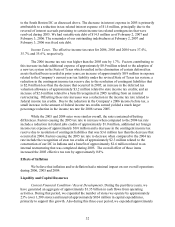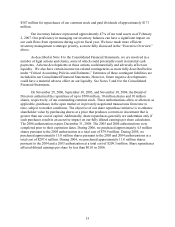Dollar General 2006 Annual Report Download - page 25
Download and view the complete annual report
Please find page 25 of the 2006 Dollar General annual report below. You can navigate through the pages in the report by either clicking on the pages listed below, or by using the keyword search tool below to find specific information within the annual report.Our management team continues to focus on making good investment decisions for our
long-term growth and profitability. In an effort to better support sales efforts in our stores and to
improve profitability, we have attempted to strengthen our senior leadership team over the last
several years and to improve synergies between store operations, store development,
merchandising, marketing and the supply chain. We believe we now have a strong leadership
team in place and are beginning to see the impact of its efforts throughout the organization. In
particular, this team developed and has begun to implement significant new programs related to
our merchandising and real estate strategies.
Early in the fiscal year, we made changes to address unexpected shortfalls in same-store
sales performance and declining customer traffic that we experienced from September 2005
through March 2006. Our efforts to arrest the trend and generate higher sales included significant
increases in our promotional efforts, utilizing advertising circulars and more promotional pricing
beginning in the first quarter of 2006. We also added more national brands, which typically carry
a lower gross profit rate, in several merchandise categories, including food, snacks and
automotive. While these efforts did reverse the same-store sales trend and resulted in improved
sales, the gross profit rate and selling, general and administrative expenses rate to sales were
unfavorably impacted. Accordingly, we began to concentrate our efforts on increasing the sales
in our higher gross profit categories, namely, home products, basic clothing and seasonal. The
evaluation of our performance in these categories led us to challenge our long-time business
practice of packing away end-of-season merchandise.
In November 2006, we announced a plan to minimize the amount of merchandise in the
stores that is carried over to subsequent periods (“packaway”). We began a significant effort in
the fourth quarter of fiscal 2006 to sell-through this inventory, eliminating over half of the
targeted merchandise by the end of the fiscal year. With few exceptions, we plan to eliminate,
through end-of-season and other markdowns, existing seasonal, home and apparel packaway
inventories from the stores by the end of fiscal 2007, allowing for newer and fresher items and
more appealing merchandise presentation as we move forward. To maximize the financial
returns of this initiative while accelerating the sell-through of the targeted inventory, we
developed a schedule for markdowns and established an oversight team to monitor our efforts. In
addition, we are utilizing television and radio advertising to help increase awareness of this effort
as well as to introduce potential customers to our brand and everyday product offerings.
Discontinuing our traditional inventory packaway management model is an attempt to
better meet our customers’ needs and to ensure an appealing, fresh merchandise selection. In
addition, beginning in fiscal 2007, we plan to sell virtually all current-year non-replenishable
merchandise by taking end-of-season markdowns, allowing for increased levels of newer,
current-season merchandise. We believe this strategy change will enhance the appearance of our
stores and will positively impact customer satisfaction as well as the store employees’ ability to
manage stores, ultimately resulting in higher sales, increased gross profit, lower employee
turnover, and decreased inventory shrink and damages. We also expect that this improved
inventory management will result in more appropriate per store inventory levels.
Also in November 2006, we announced significant changes to our real estate strategy.
After a comprehensive analysis of the performance of each of our stores, management
23


